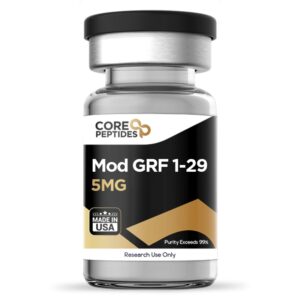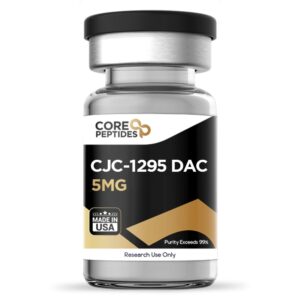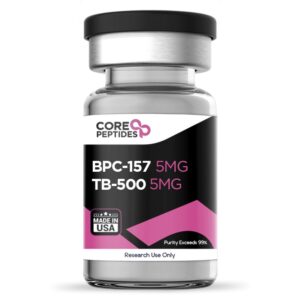Description
ABP-7 Peptide (Actin Binding Peptide-7)
Overview
ABP-7, also referred to as TB-500 Fragment or Ac-LKKTETQ, is a synthetic heptapeptide derived from Thymosin Beta-4 (Tb4). Specifically, ABP-7 corresponds to amino acids 17–23 of Tb4, representing the central actin-binding domain of the parent protein. This N-acylated fragment is thought to retain many of the biological activities of Thymosin Beta-4, particularly those related to actin regulation, cellular motility, tissue repair, and angiogenesis.
ABP-7 is produced through solid-phase peptide synthesis, allowing for high purity and consistency in research applications. As a fragment of Thymosin Beta-4, it is designed to target the actin cytoskeleton, which is fundamental for cellular shape, movement, and intracellular transport.
Chemical Properties
-
Molecular Formula: C38H81N9O20
-
Molecular Weight: 889.5 g/mol
-
Other Names: TB-500 Fragment, Ac-LKKTETQ
Mechanism of Action
ABP-7 is believed to exert its biological effects primarily by binding to actin monomers (G-actin) and preventing their polymerization into filamentous actin (F-actin). This sequestration of G-actin can:
-
Increase the pool of available actin monomers within cells.
-
Influence cytoskeletal architecture, affecting cell shape, migration, and intracellular transport.
-
Promote cellular behaviors critical for wound healing, tissue regeneration, and angiogenesis.
Through these mechanisms, ABP-7 can mimic the actions of the parent Thymosin Beta-4 protein while being a smaller, targeted peptide suitable for experimental applications.
Research and Clinical Applications
1. Wound Healing
ABP-7 has been studied for its potential to accelerate wound repair, particularly in aged or compromised models. Research suggests it may:
-
Promote keratinocyte migration, allowing cells to move into damaged areas.
-
Enhance collagen deposition at wound sites, strengthening tissue structure.
-
Facilitate wound closure by regulating cytoskeletal dynamics.
Some studies indicate that ABP-7 can achieve results comparable to full-length Thymosin Beta-4, supporting its use as a functional fragment for regenerative research.
2. Tissue Scarring (Fibrosis)
ABP-7 may exhibit anti-fibrotic properties, potentially influencing fibroblast activity and reducing scar formation. Preliminary data suggest:
-
Inhibition of PDGF-BB-dependent upregulation of PDGFβ receptor, α-smooth muscle actin (α-SMA), and collagen type I.
-
Suppression of Akt phosphorylation at T308 and S473, potentially reducing PRAS40 activation.
-
Overall reduction in fibroblast proliferation and migration associated with fibrogenesis.
This positions ABP-7 as a promising candidate for studying mechanisms to mitigate fibrosis in tissues such as the liver or heart.
3. Angiogenesis
ABP-7 may support angiogenesis, the formation of new blood vessels, through its effects on endothelial cells. Potential mechanisms include:
-
Facilitating endothelial cell migration and tube formation.
-
Supporting vessel sprouting in ex vivo models, such as aortic ring assays.
-
Modulating actin availability, optimizing cytoskeletal dynamics needed for angiogenic processes.
These properties may have applications in tissue repair, ischemic injury studies, and vascular biology research.
Conclusion
ABP-7 is a highly targeted, synthetic fragment of Thymosin Beta-4 with a focus on actin-binding activity. Its potential roles in wound healing, fibrosis mitigation, and angiogenesis make it a valuable tool for experimental research in regenerative medicine, tissue repair, and cellular dynamics. ABP-7 peptide is intended for research and laboratory use only.
References
-
Esposito, S., et al. “Synthesis and characterization of the N-terminal acetylated 17-23 fragment of thymosin beta 4 identified in TB-500.” Drug Testing and Analysis, 2012. DOI
-
Sosne, G., et al. “Biological activities of thymosin beta4 defined by active sites in short peptide sequences.” FASEB Journal, 2010. DOI
-
Philp, D., et al. “Thymosin beta 4 and a synthetic peptide containing its actin-binding domain promote dermal wound repair in db/db diabetic mice and in aged mice.” Wound Repair and Regeneration, 2003. DOI





Reviews
There are no reviews yet.